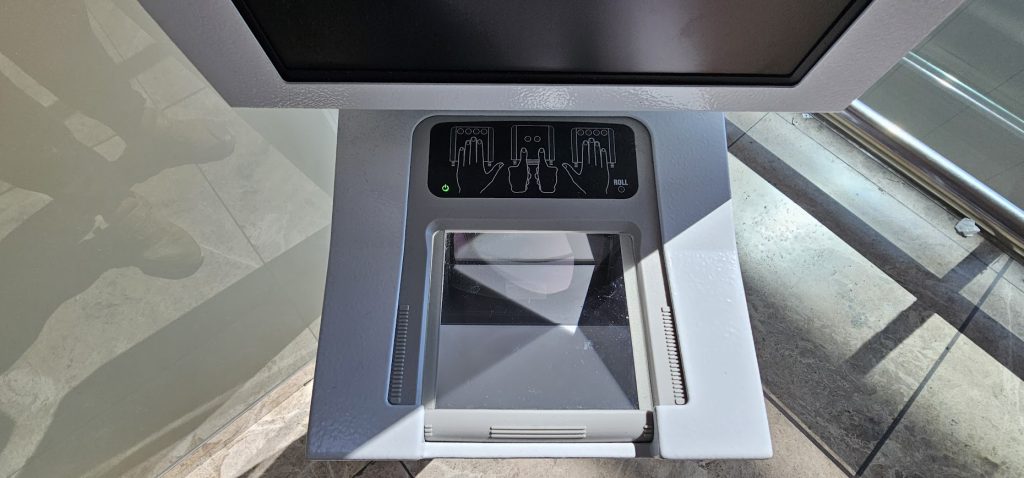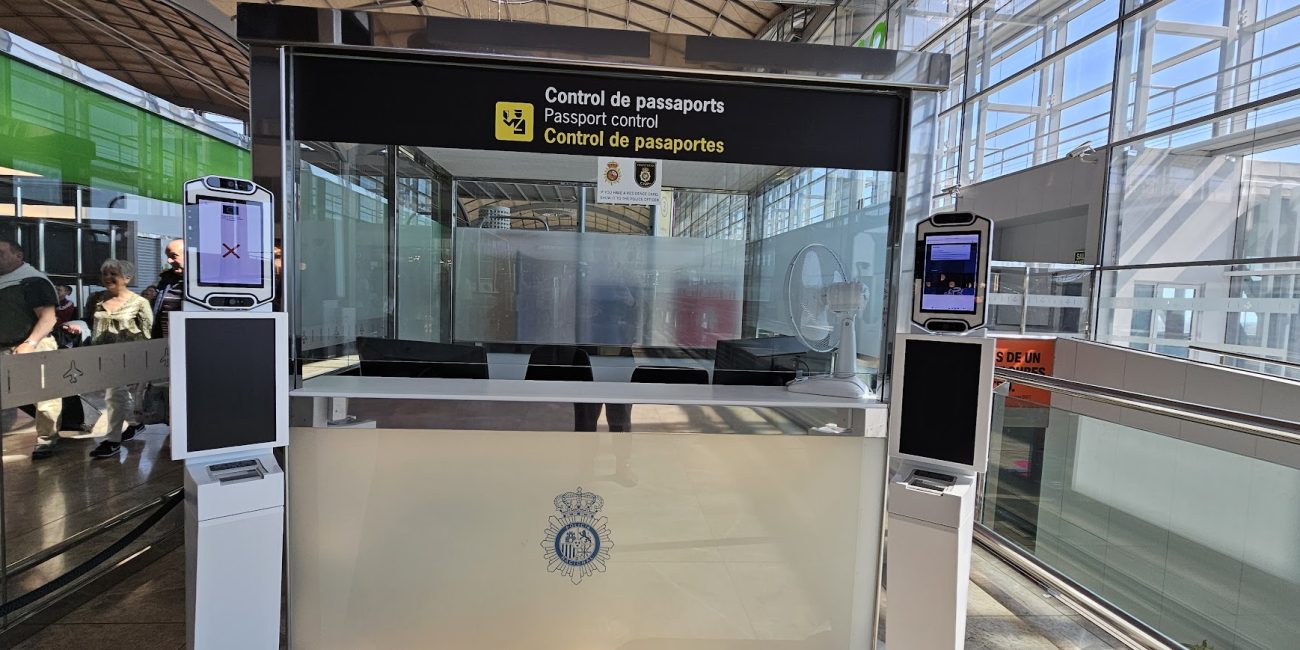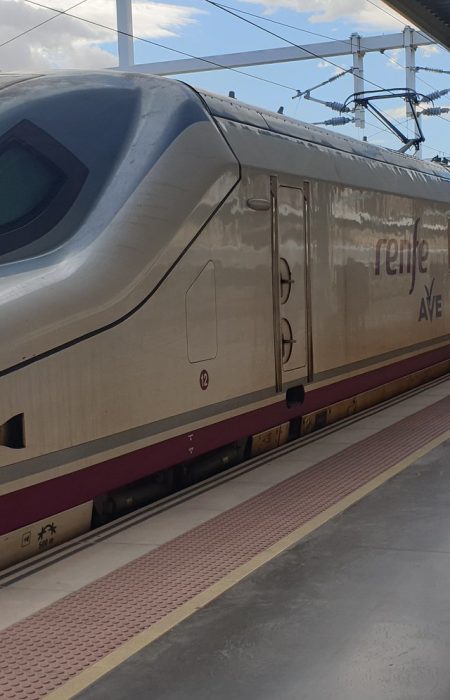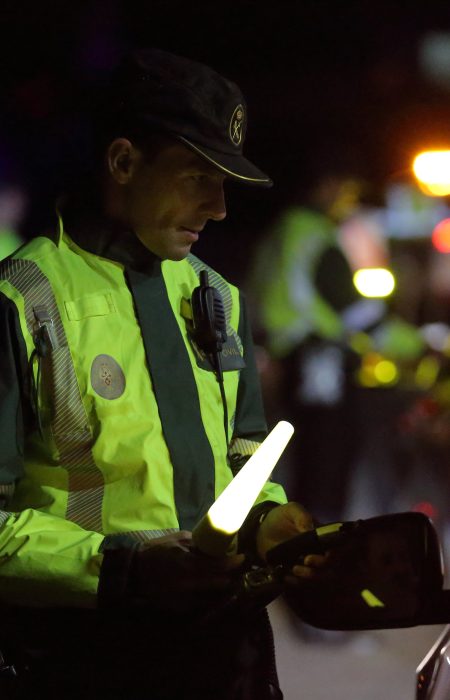From October 2025, the EU rules force people from “third-party” countries to enter European territories through the “entry-exit system” (EES). The procedure involves an automated computer system that registers non-EU nationals and EU nationals for short stays (up to 90 days within 180 days) when they cross the external borders of any EU or Schengen countries.
Controlling the admission and exit of nations like Morocco, Algeria, and Moldova, which just started direct flights and serve as a reference point for Ukrainians, will also be necessary.
Last year, a total of 6,117,968 Britons used Alicante-Elche Miguel Hernandez airport, compared to 132,633 Algerians and 130,677 Moroccans.
The Alicante terminal received equipment from the ministry of interior to ensure the system’s effectiveness months ago. These techniques stand out due to their technological advancements.
First, personal information (dates, entry and exit from the nation) and biometrics (facial picture and fingerprints) are collected. Many travellers are already aware with this process, as it is identical to how the terminal handles passport control.
The fundamental difference between the ETIAS (2026) and EES (October) is that the former requires a payment of over 7 euros, while the latter is free.
According to the government subdelegation of Alicante, the Interior Ministry is developing teams to manage this data. “We are engaging with the National Police, Aena, and other organisations to prepare for the new entry control system and departures. We have held technical and operational meetings to coordinate all aspects of the system’s deployment. The sub-delegate, Juan Antonio Nieves, aims to ensure a safe and timely implementation.
The state agency recognises the significant number of residents and visitors to the province, emphasising the need for clear and accessible information on new entrance requirements. We are working to ensure that all users are well-informed and ready to use the system.
It is expected to begin operations in 2026, or a few months later
Visa-exempt nationals travelling to the 29 Schengen areas (Germany, Austria, Belgium, Bulgaria, Croatia, Denmark, Slovakia, Slovenia, Spain, Estonia, Finland, France, Greece, Hungary, Iceland, Italy, Latvia, Liechtenstein, Lithuania, Luxembourg, Malta, Norway, Netherlands, Poland, Portugal, Czech Republic, Romania, Sweden) will need to use the “European Information and Authorisation System” (ETIAS) for entry.

The key distinction is that it requires a payment of 7 euros, unlike EES, which is free. Europa is not the first to implement a tourist fee based on “travel authorisations” for visa-exempt nationals. Countries like Canada and Australia require similar travel permits. For Spaniards, the most well-known factor is the access rate required for flights to the United States. This procedure includes the well-known questionnaire. People who travel for recreation or work tend to be linked.
The European authorisation is valid for three years if no additional payments are required during that period.
The EES is a control upon arrival, whereas the ETIAS must be processed before travel.
Differences and Warnings
The European Commission advises against fraud and recommends managing it directly through the official website to prevent management surcharges from other agents. The objectives of Europe are similar, including system modernisation, fraud prevention, identity management, and cross-border control within the Eurozone.
To utilise correctly, keep in mind that the EES is a control at arrival, while the ETIAS must be processed before the journey. The authorities emphasise that these certificates are not substitutes for visas.
The EES will register non-Schengen and non-EU travellers, reducing the need for manual passport stamping. According to the Ministry of the Interior, this strategy aims to streamline and limit the use of recognised colas.
Foreigners can obtain the ETIAS online, saving time and money compared to visiting a consulate and acquiring a visa. The system is not yet operating, and no applications are being collected. The European Commission’s official travel portal will publish the exact launch schedule.
The province of Alicante serves as a border control reference for Europe due to its international airport and huge population.
More pricey than New York, but cheaper than London.
Europe is not alone in modernising border controls, particularly for air travel. Since 2010, Spanish citizens who go to the USA without a visa and have a digital passport must obtain permission through the ESTA programme. It costs $4 (3.5 euros) and is valid for two years.
The most significant change pertains to the United Kingdom. Since January 1st, this step must be completed before entering the country.
In April, before the Easter holidays, the country’s officials raised the price to 16 pounds (about 19 euros) from 9 pounds.
The validity period is two years, and the easiest way to complete the procedure is through the official app.
In Canada, the pricing is 7 Canadian dollars (about 4.5 euros), with a 5-year validity period.
The ESTA costs 20 dollars in Australia (about 11 euros). These are short-term visits ranging from three months to 180 days every year, depending on the country.









No Comment! Be the first one.